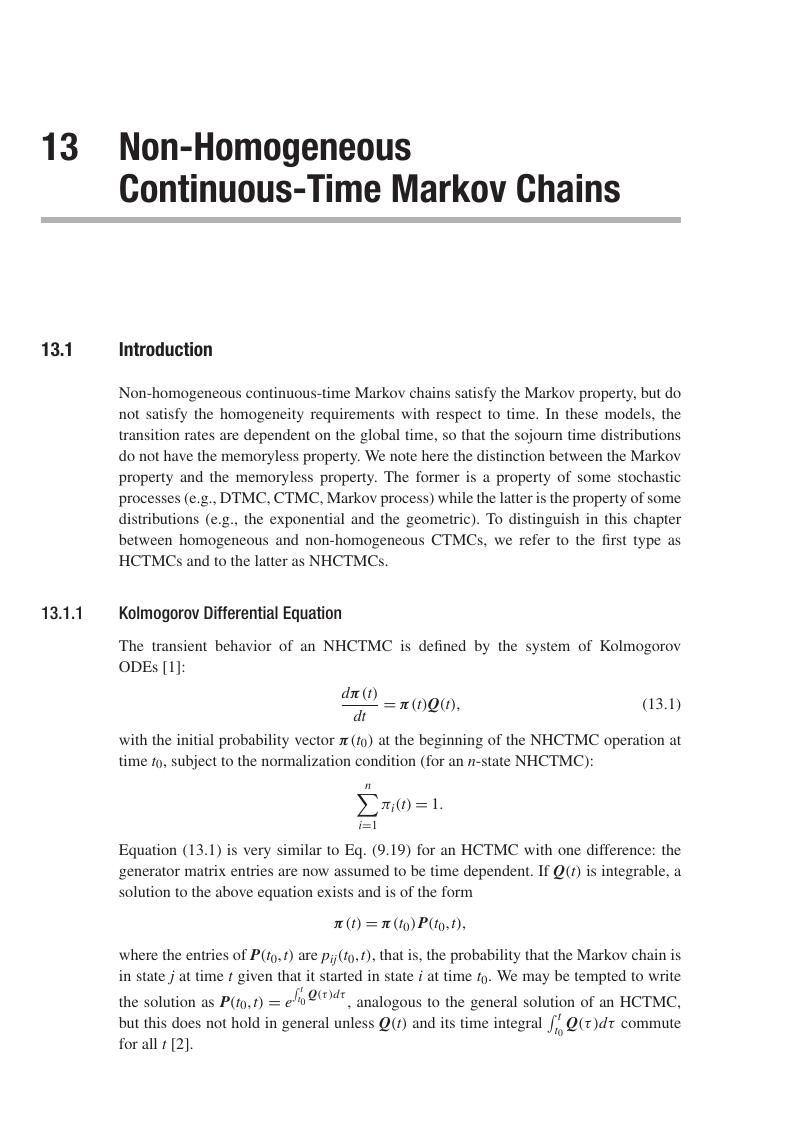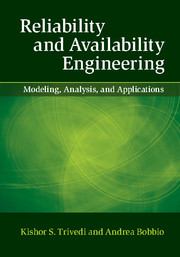Book contents
- Frontmatter
- Contents
- Preface
- Part I Introduction
- Part II Non-State-Space (Combinatorial) Models
- Part III State-Space Models with Exponential Distributions
- Part IV State-Space Models with Non-Exponential Distributions
- 13 Non-Homogeneous Continuous-Time Markov Chains
- 14 Semi-Markov and Markov Regenerative Models
- 15 Phase-Type Expansion
- Part V Multi-Level Models
- Part VI Case Studies
- Author Index
- Subject Index
- References
13 - Non-Homogeneous Continuous-Time Markov Chains
from Part IV - State-Space Models with Non-Exponential Distributions
Published online by Cambridge University Press: 30 August 2017
- Frontmatter
- Contents
- Preface
- Part I Introduction
- Part II Non-State-Space (Combinatorial) Models
- Part III State-Space Models with Exponential Distributions
- Part IV State-Space Models with Non-Exponential Distributions
- 13 Non-Homogeneous Continuous-Time Markov Chains
- 14 Semi-Markov and Markov Regenerative Models
- 15 Phase-Type Expansion
- Part V Multi-Level Models
- Part VI Case Studies
- Author Index
- Subject Index
- References
Summary

- Type
- Chapter
- Information
- Reliability and Availability EngineeringModeling, Analysis, and Applications, pp. 489 - 508Publisher: Cambridge University PressPrint publication year: 2017
References
- 1
- Cited by



